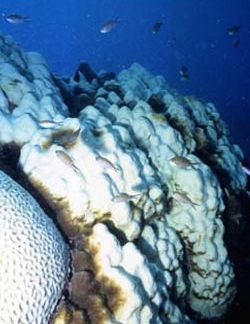Scientists alarmed by Little Cayman coral bleaching
 (CNS): Following the recent announcement by the Department of the Environment (DoE) that reefs around Grand Cayman are suffering the adverse affects of coral bleaching, scientists at the Central Caribbean Marine Institute (CCMI) said this week that their visits to reefs around Little Cayman have also confirmed the same problem. Working with the DoE, CCMI visited five sites, including Sailfin Reef, Rock Bottom Wall, Snapshot Reef, Nancy’s Cup of Tea, and Grundy’s Gardens.Bleaching was observed at every site and was found to be affecting corals as shallow as 20 feet and as deep as at least 120 ft on Bloody Bay Wall.
(CNS): Following the recent announcement by the Department of the Environment (DoE) that reefs around Grand Cayman are suffering the adverse affects of coral bleaching, scientists at the Central Caribbean Marine Institute (CCMI) said this week that their visits to reefs around Little Cayman have also confirmed the same problem. Working with the DoE, CCMI visited five sites, including Sailfin Reef, Rock Bottom Wall, Snapshot Reef, Nancy’s Cup of Tea, and Grundy’s Gardens.Bleaching was observed at every site and was found to be affecting corals as shallow as 20 feet and as deep as at least 120 ft on Bloody Bay Wall.
“Using transects to quantify the amount of bleaching, it was found that up to 96% of coral cover on Little Cayman reefs was either totally bleached or extremely pale compared to normal coloration," a spokesperson stated. “Expedited permission was granted by the DoE to extract small samples, in order to identify the remaining types of algae that the corals are hosting in their tissues. Since some algae types have been found to be more resistant to thermal stress, identifying whether corals are hosting these more resistant types could help scientists better understand the distribution of bleaching that we are seeing throughout the Cayman Islands.”
Category: Science and Nature

